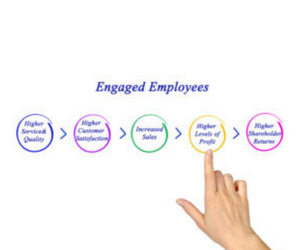Musculoskeletal Problems In Women
CONSIDER MUSCULOSKELETAL PROBLEMS WHEN MAKING DIAGNOSES
When a woman comes in with pain, consider the possibility that her pain has a musculoskeletal cause. I’ve seen many cases of women who’ve seen a dozen specialists over the years but none diagnosed the musculoskeletal problems that were causing the pain. These patients may feel depressed because of the pain but also worried about their sanity, given that the specialists haven’t been able to find what’s wrong. When these women get a correct diagnosis, it’s a life-changing experience for them.
WHEN MAKING A DIAGNOSIS FOR THE CAUSE OF PAIN, TAKE THE PATIENTS’ HISTORY
As a typical example of why I take a patient’s history when she complains of pain; take the case of a woman who came into my office complaining of pain above her pubic bone. There are a number of tests that might seem appropriate in the absence of further information; such as a colonoscopy or checking for an ovarian cyst.
However, consider this example. You take a patients history and learn that just recently she slipped on ice and fell. You then start touching the rectus abdominus, and you find that this is exactly where it hurts. When you ask her to hold a sit-up position, she tells you that this increases the pain. These are strong indications that the problem is muscular. Having taken her history, and taking anatomy into account, you may be able to get to a correct diagnosis rapidly without subjecting her to unnecessary, expensive, and time-consuming tests.
CHECK PELVIC FLOOR MUSCLES AFTER CHILDBIRTH
After delivery, it’s important to get a sense of how the pelvic floor muscles are recovering. Unfortunately, pelvic floor problems tend to be invisible and undertreated, and left untreated, they may set the woman up for urinary incontinence later in life. Urinary incontinence is the number one reason for women entering nursing homes, so doing something to prevent it early on is important. To check the pelvic floor muscles, palpate to see if the woman is having pain, and do this both through the vagina and the rectum. If there’s a problem, refer her to a pelvic floor physical therapist.
PRACTICE TRIAGE FOR MUSCULOSKELETAL PROBLEMS
Learning to figure out which problems need referral for surgical care and which can be treated in house is an important skill for the primary care provider. An anterior cruciate ligament (ACL) tear can be a devastating injury and is likely to require surgical care. On the other hand, many if not most knee problems can be treated in house. The reason to be careful about not sending knee patients for surgical care if they’re not true candidates for surgery is that the patient is likely to end up at the back of the line for treatment. In a hospital setting, I’ve come across patients who had waited for months before being seen.
ENCOURAGE EXERCISE AND GOOD POSTURE
Exercise and good posture are important at any age. Post-menopause, the costs of poor posture and lack of exercise show up in a significant increase in complaints of pain. Poor posture can result in compression fractures in the spine. The habit of leaning forward can mean the arms aren’t hanging from the shoulders in the right position, and this in turn can mean rotator cuff pain. Further, the frailty associated with sarcopenia (muscle loss) and osteoporosis can be devastating. Exercise can slow both muscle loss and bone loss, and strengthening the back can mean better posture.
Search Articles
Latest Articles
Mitzi Perdue Transformational Leadership Lessons Learned In Life
Mitzi-Perdue Transformational Leadership Lessons Learned In LifeAbout The PodcastUnscripted, real, transparent information and interviews from Wes Schaeffer, The Business Fixer, to help you master inbound marketing and generate more inbound sales that close faster,...
Mitzi Perdue | Author | 10-20-24
Mitzi Perdue | Author | 10-20-24Watch The Episode About The Episode Mitzi Perdue | Author | 10-20-24 Learn more about your ad choices. Visit megaphone.fm/adchoicesAbout The PodcastHosted by John Catsimatidis every Sunday at 8 a.m., The Cats Roundtable mixes common...
Tessa Adams’ Journey to Create a Safe, Supportive Online Community for Mental Health
https://foreignpress.org/journalism-resources/tessa-adams-journey-to-create-a-safe-supportive-online-community-for-mental-health Publication –foreignpress.org
Arming Ukrainian Soldiers with Poetry and Humor
https://foreignpress.org/journalism-resources/arming-ukrainian-soldiers-with-poetry-and-humor Publication –foreignpress.org
Subscribe to Updates
About Author

Mitzi Perdue is the widow of the poultry magnate, Frank Perdue. She’s the author of How To Make Your Family Business Last and 52 Tips to Combat Human Trafficking. Contact her at www.MitziPerdue.com
All Articles
Employee Engagement – Gallup Really Knows!
Employee Engagement - Gallup Really Knows!Visit Gallup, the People Who Really Know There are 1.3 billion full-time employees in the world. Give a guess: how many feel enthusiastic about and committed to their work? 1) 13% 2) 30% 3) 82% 4) How the heck could anybody...
Recurrent Vaginitis
Recurrent VaginitisMOST WOMEN WILL AT SOME TIME EXPERIENCE VAGINITIS At some point in their lives, most women will experience vaginitis. It’s one of the most common gynecologic condition encountered in the office. Typically, it comes about when the yeast or bacteria...
Take Action: Beating Your Competitors
Take Action: Beating Your Competitors Act Faster Than Your Competitors The super-successful people I’ve known have all had a huge propensity for action. They had tremendous agility in carrying out projects rapidly. I remember one night in late 1951, my father Ernest...
Transforming Cardiovascular Disease Prevention In Women
Transforming Cardiovascular Disease Prevention In WomenCARDIOVASCULAR DISEASE (CVD) IS USA’S LEADING CAUSE OF DEATH FOR WOMEN One in four women will die of CVD, and to put this in perspective, the annual CVD mortality for women is double that of all forms of cancer...
Obesity In Women: New Insights
Obesity In Women: New InsightsOBESITY HAS MORE IMPACT THAN ANY OTHER CHRONIC DISEASE Obesity has enormous impact, partly because it is so widespread and partly because it exacerbates so many other disease states. In the US, there are 93 million Americans with...
Fingernail Infections
Fingernail InfectionsFINGERNAIL INFECTIONS AFFECT WOMEN MORE THAN MEN In contrast to toenail infections, fingernail infections, especially those caused by candida, impact more women than men. This happens because often women’s jobs as housekeepers or dishwashers...



